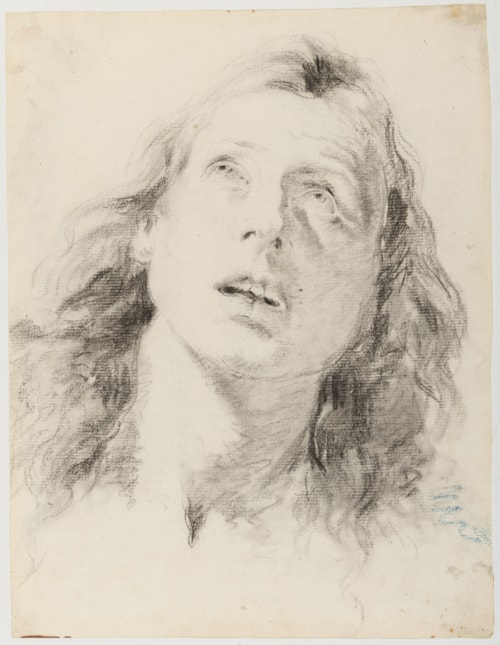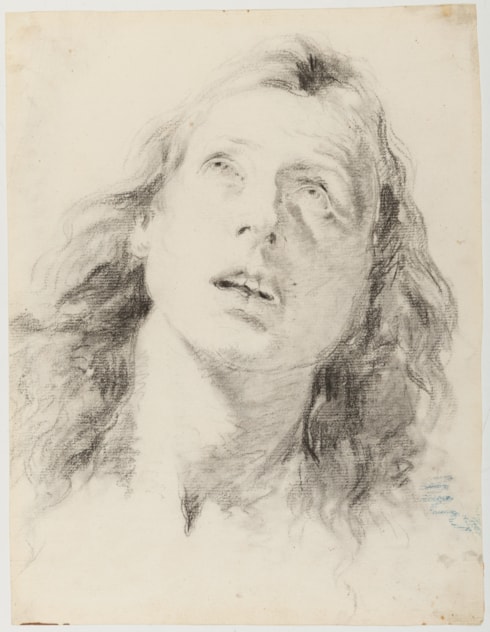
Lorenzo Baldissera TIEPOLO
Venice 1736 - Humera, nr. Madrid 1776
Biography
Like his brother Domenico, who was nine years older, Lorenzo Tiepolo was trained in his father Giambattista’s workshop and accompanied him to Würzburg, working as his assistant on the frescoes of the Residenz between 1751 and 1753. In 1761 he was admitted into the Fraglia, the Venetian painter’s guild, and the following year went with his father and brother to Madrid. Although he had tried and failed to enter the service of King Charles III of Spain in 1768, he chose to stay in Spain after Giambattista Tiepolo’s death in 1770. While Lorenzo’s style remained indebted to that of his illustrious father, during his time in Spain he was also particularly influenced by the work of the German painter Anton Raphael Mengs, who was active at the Spanish court at around the same period. Lorenzo made his name as a draughtsman and pastellist, and painted a number of fine pastel portraits of the children of Charles III which reflect something of the sophisticated portraits of Rosalba Carriera. It was also in Madrid that he produced his most original works; a series of vibrant half-length pastels of contemporary Spanish characters and types. These distinctive genre subjects, perhaps his finest independent works, give a glimpse of what the artist might have accomplished, freed from his father’s overwhelming influence, had he not died prematurely, after a long illness, in 1776.
Relatively few drawings by Lorenzo Tiepolo are known, certainly in comparison with the much more extensive drawn oeuvre of Giambattista and Domenico. Unlike them, he seems to have worked mainly in chalk or pastel rather than in pen and ink, and he evinced a particular penchant for portraiture, producing drawn portraits of such Venetian contemporaries as the art critic and collector Francesco Algarotti and the playwright Carlo Goldoni. Drawings by or convincingly attributed to Lorenzo - some of which are copies after the work of his father and older brother, produced during his period of apprenticeship in the family studio - are today in the collections of the Kupferstichkabinett in Berlin, the Harvard University Art Museums in Cambridge, Massachusetts, the Museo Bardini in Florence, the Museo del Prado in Madrid, the Yale University Art Gallery in New Haven, the Metropolitan Museum of Art and the Pierpont Morgan Library in New York, the Ecole des Beaux-Arts in Paris, the Museo Civico in Pavia, the National Gallery of Art in Washington, D.C., the Martin von Wagner-Museum in Würzburg, and elsewhere.


